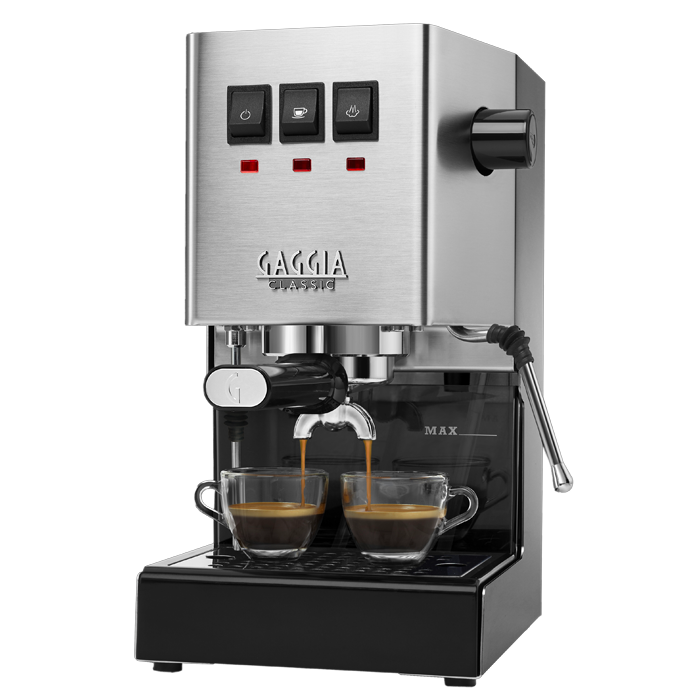Beginner's Guide to Latte Art
Updated for 2021. Hey everyone, I’m AJ from Whole Latte Love, and today I want to take you through my beginner tips on how to get started pouring latte art.
In this video I’ll go through the basics of steaming milk, some mistakes to avoid, and how to pour a simple heart design. Keep in mind, I’m not a barista. I only recently started getting into latte art as a hobby, but I wanted to share what I’ve learned along the way to help you get going.
It’s important to first start with a good espresso. You really want to nail down your basics of dialing in and pulling shots before worrying about latte art. I’m not going to get into the details of that in this video, but if you’re just starting out in espresso, check out the video link down in the description for a full beginner’s guide to semi-automatic espresso machines.
If you’re using a dual-boiler machine like the Rocket R58, you can brew your espresso and steam your milk simultaneously, aiming for them to finish at the same time. If you’re using a premium, entry-level, single-boiler machine like the Gaggia Classic Pro, you’ll have to do one at a time. There is some debate on whether you should steam your milk or brew your shot first. As long as your machine gets up to steam temperature relatively quickly, like the Classic Pro does, I personally prefer to brew first then steam. While your crema may dissipate a little, this will prevent your milk from separating while you’re pulling your shot.

$599.00
How to Make a Latte
Today I’m making a ten ounce latte, consisting of a two ounce, double shot of espresso and eight ounces of steamed milk. For the milk, I’m using a twelve ounce pitcher, filled to the bottom of the spout, which is about 6 ounces of cold milk. This milk will expand by about a third as I’m steaming it, giving me the perfect amount for my drink with minimal waste.
Steam wand position is crucial to getting a good texture in your milk. First, open your steam valve for about a second to purge the wand of any water that’s inside. Start by placing the wand in the center of your pitcher, using the spout as a guide. Imagine the pitcher broken up into thirds and slightly tilt the pitcher to one side, placing the spout on one of the third-lines. Submerge the tip about ½ inch into the milk. Our goal is to hold this position without having to move the wand too much while steaming. Turn on the steam to full power, and immediately lower the pitcher very slightly until you hear a ripping noise from the wand, which sounds like paper tearing. This indicates that you’re injecting air into the milk. Continue aerating until the pitcher starts to feel warm on the outside. Once you feel it getting warm, raise the pitcher just enough to submerge the tip of the wand and stop introducing air. This will create a whirlpool of milk that is rapidly spinning and mixing, which helps break up any larger bubbles and create a uniform texture throughout the pitcher.

If you don’t get this effect, move the wand until the milk does start rolling, and remember this placement as your start position for next time. You’re aiming to heat the milk until it reaches roughly 140 degrees Fahrenheit. You could use a thermometer to measure the milk temperature, but an easy way to get close is to touch the pitcher with your other hand. Once it starts becoming too warm to hold, shut off the steam, remove the pitcher, wipe down the wand, and purge it to remove any remaining milk inside. Give the pitcher a couple taps on the counter to break up any remaining large bubbles and a swirl to mix up the milk and prevent separating.
The ideal steam wand position and angle will vary depending on your machine and pitcher, so experiment to find what works best for you and your equipment. To avoid wasting milk while practicing, use cold water with a single drop of dish soap in your pitcher. This will simulate milk, and allow you to get your technique down before moving on to real drinks.
A couple mistakes to avoid when steaming your milk - the first is adding too much air. This happens either by having the top of the wand too far above the milk’s surface, or by injecting air for too long. You’ll know you’re doing this if the milk stretches and expands too much in your pitcher. The resulting milk will be too thick and foamy and when you go to pour it. This is great for a traditional cappuccino, but not for the getting microfoam required to pour latte art. On the other hand, you don’t want to add too little air either. You’ll know you’re doing this if you hear a loud, unpleasant, screaming sound coming from the pitcher. If you hear this sound, lower the pitcher slightly until the tip of the steam wand reaches the surface of the milk and you hear the ripping sound again. The texture we’re aiming for is similar to wet latex paint. If yours is too thin, next time try adding a little more air. If it’s too thick, add a little less.

How to Pour Latte Art
Now, onto pouring. Tilt the cup at a 45 degree angle. Begin pouring with the pitcher high above the cup, about 4 inches. Start pouring slowly, directly into the center of the deepest part, then move around the cup to mix in the crema and set a blank canvas. Once the rising liquid almost reaches the edge of the cup, and the cup is around two-thirds full, stop pouring, but keep the cup tilted. Bring the pitcher down as close as you can to the center of the espresso and begin pouring again, this time faster than before. As the cup fills, tip it back to level. This will prevent it from overflowing and also push your design to the proper spot. At this point, slow your pour down, slightly raise the pitcher, then strike through, trying to keep everything as centered and symmetrical as possible.
One tip that helped me a lot when I first started - when you lower your pitcher to start pouring the design, rest the pitcher on the edge of the cup. As you pour and tilt your cup level, keep this contact point in the exact same place, just simply tilt both hands together, as if they’re locked in that position relative to each other. Don’t worry about wiggling the pitcher or anything for now, just focus on the fundamentals of frothing and pouring. Establishing good techniques for this basic heart will really help when you move on to more advanced designs.
Chances are you won’t get this perfect on your first try, or even your 10th try. Don’t get discouraged. The more you practice, the more you’ll hone your technique and learn what works best for you and your machine. As I mentioned in the beginning, until recently, I had never even tried pouring latte art. As a challenge to myself, I limited myself to one latte a day with lunch, and took a picture of the result each time. I found that tracking my progress this way helped me analyze my technique and improve my pours. At the beginning, most were pretty awful as I got the feel for the right way to texture milk and pour the design. As time went on there were gradual improvements, until I started getting more consistent results and began experimenting with more advanced designs.
So if you’re just starting out in espresso or want to learn latte art, give this a try. If you have any tips of your own or questions for me, let me know down in the comments and I’ll get back to you. I’m AJ, and thanks for watching. If you want more videos like this, subscribe to our YouTube channel and be sure to come back for more of the best on everything coffee, brought to you by Whole Latte Love.



